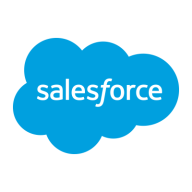

Tableau Enterprise and ELK Kibana are both powerful data visualization and analytics tools. While Tableau Enterprise shines with its ease of use and powerful visual analytics, ELK Kibana offers superior real-time logging and integration capabilities.
Features: Tableau Enterprise provides advanced interactive dashboards, seamless data source integration, and a user-friendly interface. Its ability to handle large datasets and complex visualizations makes it a go-to for many organizations. ELK Kibana is preferred for real-time data analytics and extensive log management. It offers flexible data visualization solutions tailored for immediate insights.
Room for Improvement: Tableau Enterprise could benefit from improved real-time data processing features and more cost-effective pricing tiers. Enhancements in integration with additional logging tools would also be advantageous. ELK Kibana may improve by simplifying its deployment process, offering more intuitive user interfaces, and expanding its data visualization palette to better meet diverse user needs.
Ease of Deployment and Customer Service: Tableau Enterprise is straightforward to deploy with comprehensive support services and clear documentation, ensuring a smooth onboarding process. ELK Kibana, while offering a strong open-source community and extensive resources, requires more complex configuration and setup.
Pricing and ROI: Tableau Enterprise has higher upfront costs but provides a strong ROI through its swift deployment and robust analytics capabilities. ELK Kibana is cost-effective, especially as an open-source solution, offering substantial ROI in environments focused on log analysis and real-time data processing.

| Company Size | Count |
|---|---|
| Small Business | 117 |
| Midsize Enterprise | 66 |
| Large Enterprise | 182 |
Kibana lets you visualize your Elasticsearch data and navigate the Elastic Stack, so you can do anything from learning why you're getting paged at 2:00 a.m. to understanding the impact rain might have on your quarterly numbers.
Tableau Enterprise offers powerful features for creating interactive visualizations, dashboards, and maps, including drag-and-drop functionality and easy integration with multiple data sources, promoting real-time collaboration and self-service analysis.
Tableau Enterprise stands out with its ability to create user-friendly, interactive visualizations, making it pivotal for business intelligence applications. Users benefit from its seamless connectivity and advanced analytical functions, facilitating data blending and storytelling. Despite a complex learning curve and high licensing costs, its features like geospatial analysis and efficient content distribution drive its indispensable value for data-driven insights. Enhancements in predictive analytics and support integration with machine learning tools further its capabilities across industries.
What are the most valuable features?Tableau Enterprise is widely used for business intelligence, supporting industries like healthcare, telecommunications, and finance. Organizations utilize it to analyze performance indicators, operational insights, and financial analytics, enhancing decision-making through interactive reports and real-time data integration.
We monitor all Data Visualization reviews to prevent fraudulent reviews and keep review quality high. We do not post reviews by company employees or direct competitors. We validate each review for authenticity via cross-reference with LinkedIn, and personal follow-up with the reviewer when necessary.